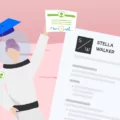Massage therapists have a wealth of knowledge that they need to be good at describing. Here’s how you can write a better resume for massage therapy.

Massage Therapist Resume Examples for You to Use This Year
Massage Therapist Resume Examples
Massage therapists need to be great at both the technical aspects of their jobs and the ability to talk to their clients. If you have these skills, however, you can’t just list them and expect that a hiring manager will believe you. Instead, you must discuss them in a way that appeals to the recruiter. Here’s how to write the best possible massage therapist resume.
What To Highlight in a Massage Therapist Resume
A hiring manager will assume that you have the technical skills necessary to work as a massage therapist by including information about your schooling and licensing. However, it’s equally as important that you highlight your ability to work with other people. In a massage therapy session, you’ll provide health care to a person’s body and mind, so knowing how to interact with others is key. Talk about both of these elements for the best results.
Structure of a Massage Therapist Resume
Your first step to writing an excellent massage therapist resume is choosing the correct resume format. You can choose from one of three formats: chronological, functional, and combination, all of which highlight different elements of your resume. Once you’ve decided on the resume format that works better for you and your experience, move on to writing your resume sections as follows.
Header
Your header must include your contact information. A professional resume will consist of your phone number and email address as well as professional social media links, such as your LinkedIn profile and online portfolio.
Resume summary or objective
The beginning of your resume should be a two- to three-sentence paragraph that goes over the most important elements you want a recruiter to see. If you have lots of experience, you’ll write a resume summary, which highlights your experience, including certifications, achievements and other qualifications. If you have less experience, you’ll want to write a resume objective, which emphasizes your skills and education, then ends with your goals and what you hope to achieve in the role.
Skills
You need to include hard and soft skills in your skills section. Here are a few bullet points that you might want to have if you’re adding massage therapy skills to your resume:
- Handling client needs
- Providing general massage services and treatments
- Aromatherapy knowledge
- Reflexology
- General wellness
- Creating treatment plans
- Communication skills
- Physical therapy knowledge
- Handling assessments of clients’ concerns
- Interpersonal skills
- Working multiple massage sessions with the same client
- Restoring range of motion
Your skill set should reflect whatever skills are in the job description.
Work history
In your work experience section, include up to 10 years of experience as a massage therapist or in related fields, such as work as a chiropractor or physical therapist. Remember to include job duties to show what you did in these previous jobs.
Education
Your education section should include any professional knowledge and training you’ve gone through. It’s common to see a board certification in Therapeutic Massage and Bodywork (NCBTMB) or a similar certification as a licensed massage therapist.
Adding various massage techniques and modalities you’ve trained in can also be helpful. This may include any of these types of massage:
- Swedish massage
- Prenatal massage
- Deep tissue massage
- Shiatsu massage
- Hot stone massage
- Therapeutic massage
- Chair massage
- Soft tissue massage
- Sports massage
- Thai massage
- Rehabilitative massage
- Trigger point massage
Do’s and Don’ts for a Massage Therapist Resume
Here are some additional tips to keep in mind when writing your massage therapist resume:
Do:
Add any memberships you have in massage therapist groups to your education section. This adds more credibility to your resume.
Read through other massage therapist resume examples from ResumeNerd before you write yours. You’ll learn how other people have written successful resumes for your career.
Use the ResumeNerd resume builder to find a great resume template. This way, you don’t have to worry about certain elements, such as your fonts and margin sizes.
Don’t:
Include more than 12 skills on your resume. Skills are an important part of your resume, but long lists of skills can be hard to read and seem to be padding your resume.
Put your high school diploma in your education section. When you went through your degree or certificate program, it required a high school diploma or equivalent.
Put infographics and images into your resume. This makes it much more difficult for your resume to pass an applicant tracking system (ATS).
FAQ: Massage Therapist Resumes
It can always be beneficial to your resume to include a cover letter. Even if the job application doesn’t specifically mention a cover letter, adding one to your application allows you to talk more extensively about your experiences, giving you a boost ahead of other job seekers and the chance to connect with a recruiter. If you’re planning to submit a job application soon, use the ResumeNerd cover letter builder to make the cover letter writing process even easier.
If you’re just out of massage therapy school and you don’t have much experience to show yet, you still need to indicate how your skills will be beneficial to the hiring manager. Highlight your education, including any honors you received, as well as your specific skills. You can also include non-professional experience, such as volunteer and academic work.
Every time you apply for a new job, you need to tailor your resume to that specific job. There’s no “perfect resume,” but just the best resume for each job. Read through the job posting and look for keywords, which are specific skills, experiences and types of knowledge. Once you find those, you can include them in your resume.








